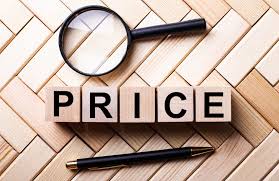
Sourcing Products from China : All you need to know
Table of content
- What the market wants
- How to ensure quality and quick deliveries
- How to pay for purchases
- How to handle a price increase
- What to do when your order doesn’t match expectations

What the market wants
Market research is the first step in a sourcing strategy. You may have retailing or importing experience related to a category of products that generates good margins. In this case, the logical next step is to find a supplier in China that makes those products and has experience selling to Western companies. If you’re a complete newbie, you have the big task of figuring out what to sell on Amazon. Here are some ways to understand which products retail well on Amazon and the most popular products imported from China. Amazon’s list of best-sellers is a good starting point. The list is updated on an hourly basis. Popular categories on the site include home and kitchen items, clothing (including accessories, shoes and jewelry) and of course tools and home improvement items.
How to ensure quality and quick deliveries
Chinese factories have been stepping up to importers’ demands for new electronic and mechanical products. You may be interested in selling products that need to be manufactured to exact technical specifications. Once you’ve confirmed the demand for a specific product, at a price that you can justify, your search for a Chinese supplier can begin. You may want to work with a manufacturer that specializes in making the product and has the capability to fulfil orders without delay. Amazon sellers retailing new mechanical or electronic products aim to get the first batch of products on the market as quickly as possible, acquire customer feedback, and use that revenue to get the ball rolling on the second batch. The goal is to get in front of customers before other sellers enter the market and compete for all the attention.


How to handle a price increase
It is not uncommon for suppliers in China to increase prices once production is under way. Changes in price can be due to an increase in the costs of sourcing raw materials or a countrywide event that affects production costs. You can avoid big price fluctuations by asking your supplier to provide a validity of the quoted price. The “valid until” period can be as short as 90 days or extend past a year for large orders. To be on the safe side, negotiate a validity of at least 180 days. – The promise of a re-order can persuade the supplier to quote the previous order price for your current order. – Check the price of the primary raw material used to make your product.
What to do when your order doesn’t match expectations
Your consignment may not meet your requirements. This risk often stems from partnering with a sub-par supplier or driving the price down too low, which never bodes well for overall product quality. If your instructions were lost in translation, the supplier may have made items that don’t fit your stipulations but are otherwise well-made in terms of strength, finish or durability. For example, if product dimensions don’t meet acceptable standards or packaging is tacky, you can have the supplier make necessary changes.

- 00 92 345-5522200
- info@aleetel.com
- Mon/Fri 9.00am to 7.00pm
- ALEE TEL. AA662, New Delhi Dawakhana Plaza, Bagh Sardaran Road, Rawalpindi, PAKISTAN.
Services
Latest News
© Copyright 2010 by Aleetel

